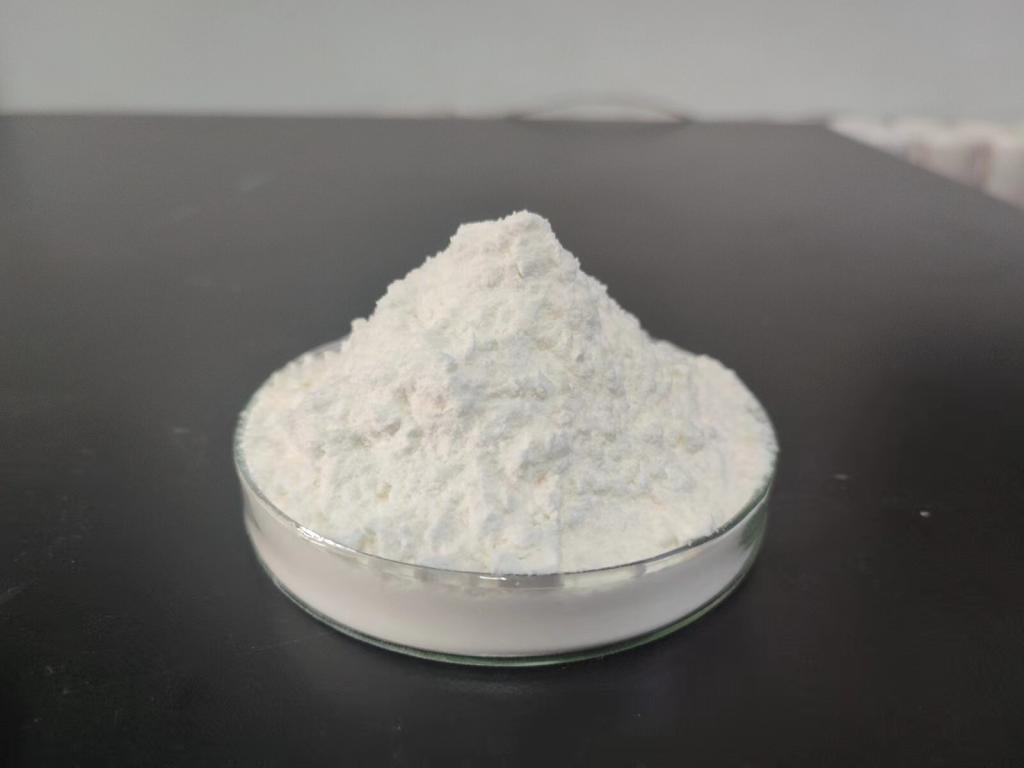Tel:+8618231198596

News
 CONTACT
CONTACT
 CONTACT
CONTACT
- Linkman:Linda Yao
- Tel: +8618231198596
- Email:linda.yao@dcpharma.cn
- Linkman:CHARLES.WANG
- Department:Overseas
- Tel: 0086 0311-85537378 0086 0311-85539701
News
Current Position:
Home >
News
>ε-Polylysine Hydrochloride: Potential Contributions to Global Food Resilience.
ε-Polylysine Hydrochloride: Potential Contributions to Global Food Resilience.
TIME:2023-10-09
Understanding ε-Polylysine Hydrochloride
ε-Polylysine hydrochloride is a naturally occurring biopolymer produced by certain strains of bacteria, most notably Streptomyces albulus. It consists of a chain of lysine amino acids linked together through peptide bonds. Its properties make it suitable for various applications in the food industry, including its use as a preservative and antimicrobial agent.
Key characteristics of ε-polylysine hydrochloride include:
Antimicrobial Properties: ε-Polylysine hydrochloride exhibits potent antimicrobial activity against a wide range of microorganisms, including bacteria and yeasts. It inhibits their growth and reproduction, thereby preventing spoilage and enhancing food safety.
Natural Origin: It is considered a natural food ingredient and is Generally Recognized as Safe (GRAS) by regulatory authorities in many countries. Its natural origin aligns with consumer preferences for clean label ingredients.
Stability: ε-Polylysine hydrochloride remains stable under various pH levels and temperatures, making it suitable for a wide range of food applications.
Water Solubility: It is highly water-soluble, allowing for easy incorporation into food formulations.
Applications in Food Preservation
ε-Polylysine hydrochloride has found several applications in food preservation, contributing to enhanced food resilience:
a. Extending Shelf Life: Its antimicrobial properties inhibit the growth of spoilage and pathogenic microorganisms in various food products. This extension of shelf life reduces food waste and supports food availability during times of stress or disruption.
b. Preventing Foodborne Illness: ε-Polylysine hydrochloride helps ensure food safety by controlling the growth of pathogens, such as Salmonella, Listeria, and E. coli, which are responsible for foodborne illnesses. This is particularly important during food crises or disease outbreaks.
c. Preservation of Fresh Produce: Fresh fruits and vegetables are highly perishable. ε-Polylysine hydrochloride can be used to create edible coatings or sprays that reduce microbial growth on the surface of these products, helping to maintain their quality and safety during storage and transportation.
d. Meat and Poultry: In meat and poultry processing, ε-polylysine hydrochloride can inhibit the growth of spoilage bacteria and pathogens, extending the shelf life of these products and enhancing their resilience in the food supply chain.
Reducing Food Waste
Food waste is a major global challenge, with significant environmental, economic, and social implications. ε-Polylysine hydrochloride contributes to reducing food waste in several ways:
a. Extended Shelf Life: By inhibiting microbial growth, ε-polylysine hydrochloride extends the shelf life of food products, reducing the likelihood of premature spoilage and disposal.
b. Enhanced Food Safety: The prevention of pathogenic contamination ensures that food products remain safe for consumption for more extended periods, reducing the need for recalls and waste due to safety concerns.
c. Minimizing Post-Harvest Losses: In the case of fresh produce, ε-polylysine hydrochloride can be applied as a protective coating, reducing post-harvest losses by maintaining product freshness and reducing spoilage.
d. Supporting Food Aid: Food aid organizations can benefit from the use of ε-polylysine hydrochloride in preserving donated food products. This ensures that aid reaches vulnerable populations in a safe and consumable condition.
Enhancing Food Resilience in a Changing Climate
Climate change is altering weather patterns, leading to increased variability in temperature and precipitation. These changes can affect crop yields, promote the growth of pathogens, and disrupt traditional agricultural practices. ε-Polylysine hydrochloride plays a role in enhancing food resilience in a changing climate:
a. Protection Against Climate-Related Risks: By extending the shelf life of food products and preventing spoilage, ε-polylysine hydrochloride helps reduce losses due to temperature fluctuations and humidity changes during transportation and storage.
b. Supporting Sustainable Agriculture: The ability to preserve agricultural products through ε-polylysine hydrochloride coatings and treatments encourages sustainable agriculture by reducing the need for excessive use of synthetic preservatives or overprocessing.
c. Increasing Food Availability: With its contribution to minimizing food waste and enhancing food safety, ε-polylysine hydrochloride supports the availability of food, especially in regions vulnerable to climate-related disruptions.
ε-Polylysine Hydrochloride and Global Food Security
Global food security involves ensuring that all people have access to safe, nutritious, and sufficient food. ε-Polylysine hydrochloride contributes to global food security by:
a. Preventing Foodborne Illnesses: Its antimicrobial properties reduce the risk of foodborne illnesses, which can have a severe impact on food security, particularly in vulnerable populations.
b. Reducing Food Losses: By extending the shelf life of food products and preventing spoilage, ε-polylysine hydrochloride reduces food losses and ensures that more food reaches consumers.
c. Supporting Food Aid: In humanitarian efforts, ε-polylysine hydrochloride can be used to preserve food aid products, ensuring that they remain safe and nutritious when distributed to communities in need.
d. Sustainable Food Systems: The use of ε-polylysine hydrochloride promotes sustainable food systems by reducing the environmental impact of food waste and supporting responsible food production.
Regulatory Considerations
The use of ε-polylysine hydrochloride in the food industry is subject to regulatory approval in different countries. Ensuring compliance with local regulations and maximum allowable levels is essential for its safe and responsible use. Collaborations with regulatory authorities are crucial to establish clear guidelines for its application.
Conclusion
As the world faces complex challenges, including climate change, population growth, and resource limitations, enhancing food resilience becomes a top priority. ε-Polylysine hydrochloride, with its natural origin, antimicrobial properties, and applications in food preservation, plays a vital role in addressing these challenges.
By extending the shelf life of food products, preventing foodborne illnesses, reducing food waste, and supporting food aid efforts, ε-polylysine hydrochloride contributes to global food resilience and security. Its versatility and potential to promote sustainability make it a valuable asset in ensuring that safe and nutritious food remains accessible to all, even in the face of adversity. As ε-polylysine hydrochloride continues to evolve, it stands as an innovative solution in the pursuit of a more resilient and sustainable global food system.
- Tel:+8618231198596
- Whatsapp:18231198596
- Chat With Skype







